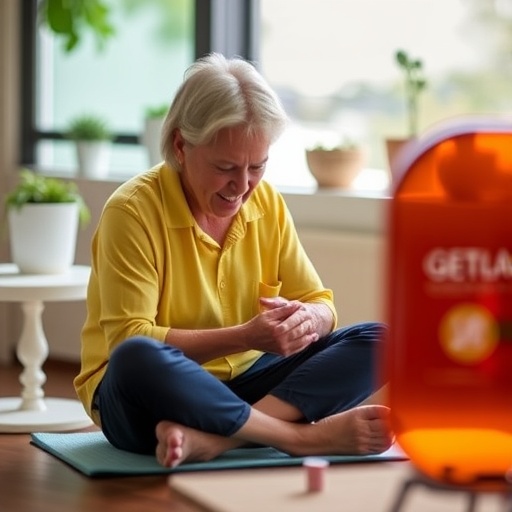In the realm of healthcare, the integration of complementary and alternative medicine (CAM) has gained significant traction, particularly among cancer patients. A recent comprehensive study conducted in Jordan has unveiled notable trends and patterns in the use of CAM modalities over the past decade. This investigation is pivotal as it sheds light on the evolving landscape of cancer treatment and patient preference, demonstrating how individuals navigate their health options in conjunction with conventional therapies.
Al-Rawashdeh and colleagues meticulously explored the prevalence of CAM among cancer patients, attempting to understand the rationale behind their choices. Their research articulates a narrative that reflects both cultural influences and individual motivations. Many patients turn to CAM seeking solace, relief, and control amid the often tumultuous journey of cancer treatment. This increasing trend poses significant questions: Why has the preference for CAM risen, and what does this signify for the future of oncological care?
One compelling factor influencing this trend is the cultural context within Jordan. Traditional beliefs and practices around health and healing still flourish in many communities. This study notes, for example, that herbal remedies, dietary changes, and spiritual therapies are not merely alternatives but are often seen as essential components of health restoration. The intermingling of historic traditions with modern health paradigms creates a unique environment that shapes patient choices, ultimately influencing the way cancer care is comprehended and enacted.
The research team, led by Al-Rawashdeh, underscored that while certain CAM practices are embraced widely, there exists a spectrum of acceptance and use across different demographic groups. Patients’ ages, education levels, and socioeconomic status played significant roles in influencing their engagement with CAM. The study’s findings indicate that younger patients, particularly those with higher education levels, are more inclined to explore and report CAM use, suggesting a shift in awareness shaped by access to information and a greater emphasis on patient autonomy in health decisions.
Among the practices evaluated, the use of acupuncture, herbal supplements, and mind-body therapies emerged prominently, aligning with findings from global studies that reflect similar trends. While these therapies are lauded for their purported benefits, such as pain reduction and improved quality of life, the authors also emphasize the need for caution. Adequate understanding of the efficacy and safety of these modalities is paramount, as some treatments may interact with conventional therapies, thus complicating patient outcomes.
Moreover, the study’s results call into question the adequacy of oncological education among healthcare providers regarding CAM. Many practitioners still hold reservations about discussing these alternatives due to a perceived lack of evidence or potential conflict with conventional treatments. This hesitance can create a chasm between patients and providers, where patients may feel marginalized in their preferences or misinformed regarding the safety of their chosen therapies.
Interestingly, the exploration of how cancer patients discuss CAM with their healthcare providers revealed indicative patterns. Many patients expressed a reluctance to disclose their use of CAM for fear of being judged or dismissed. This highlights a critical gap in communication that needs to be addressed. As oncology continues to evolve, integrating patient-centered conversations about CAM could enhance trust and encourage more comprehensive care strategies, enabling patients to feel more supported in their choices.
Another noteworthy aspect of the study is the documented shift in attitudes over the decade observed. Patients’ increasing acceptance of CAM is indicative of a broader societal shift toward holistic health approaches. This can also be partially attributed to a growing internet presence, where patients are more frequently exposed to diverse healing methodologies. Online platforms, forums, and social media have facilitated information dissemination, allowing patients to collectivize their experiences and validate their treatment choices outside the traditional healthcare structure.
As this trend unfolds, the implications for healthcare policy and research become increasingly significant. The findings from this study raise essential questions about the need for regulated practices within CAM. In light of widespread usage, it becomes imperative to establish evidence-based guidelines that delineate the safety and efficacy of these therapies within the realm of cancer care. Ensuring patient safety should be the bedrock of any complementary or alternative protocol introduced into standard treatment paradigms.
In conclusion, the decade-long analysis conducted by Al-Rawashdeh and colleagues serves as a vital resource for understanding the evolving dynamics of CAM use among cancer patients in Jordan. It offers invaluable insights that not only reflect patient behavior but also underscore the necessity for a more nuanced approach within the medical community. By fostering a more integrative dialogue about CAM, healthcare providers may enhance patient engagement, adherence, and overall treatment satisfaction. As patients continue to seek personalized approaches to their care, the healthcare landscape must adapt, ensuring safety, efficacy, and holistic support remain prioritized across patient journeys.
This study not only facilitates a deeper understanding of patient choices but also poses a challenge for future research to bridge gaps in knowledge, policy, and practice regarding CAM in oncology. As health paradigms shift, it becomes essential to recognize and validate the preferences of patients navigating the complexities of cancer treatment.
Subject of Research: Complementary and alternative medicine use among cancer patients in Jordan.
Article Title: Trends and patterns of complementary and alternative medicine use among cancer patients in Jordan: a decade comparison.
Article References:
Al-Rawashdeh, N., Alqudimat, M., Alananzeh, I. et al. Trends and patterns of complementary and alternative medicine use among cancer patients in Jordan: a decade comparison. BMC Complement Med Ther 25, 314 (2025). https://doi.org/10.1186/s12906-025-05065-9
Image Credits: AI Generated
DOI: 10.1186/s12906-025-05065-9
Keywords: Complementary medicine, alternative medicine, cancer treatment, patient preference, oncology, herbal remedies, communication in healthcare.




